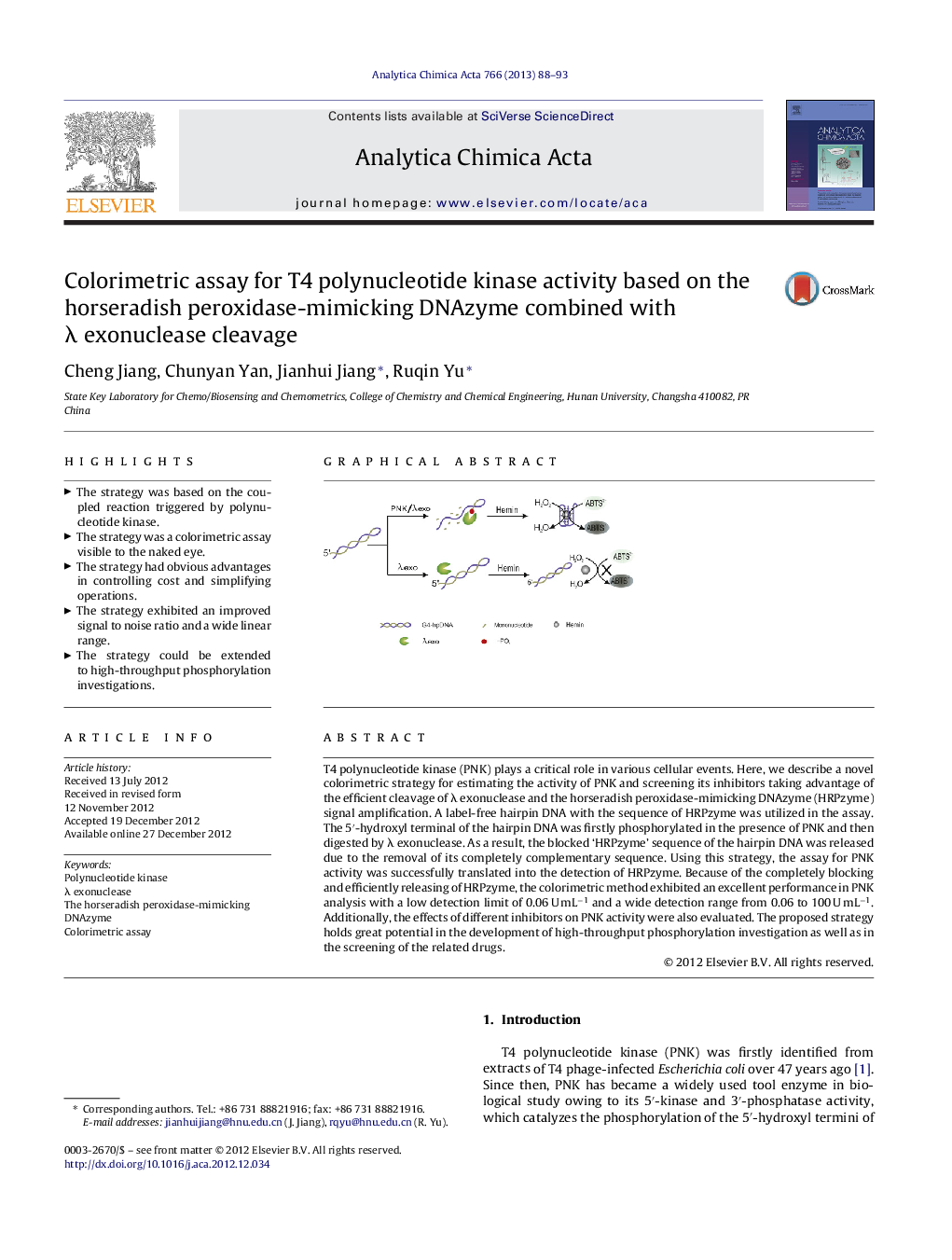| Article ID | Journal | Published Year | Pages | File Type |
|---|---|---|---|---|
| 1165341 | Analytica Chimica Acta | 2013 | 6 Pages |
T4 polynucleotide kinase (PNK) plays a critical role in various cellular events. Here, we describe a novel colorimetric strategy for estimating the activity of PNK and screening its inhibitors taking advantage of the efficient cleavage of λ exonuclease and the horseradish peroxidase-mimicking DNAzyme (HRPzyme) signal amplification. A label-free hairpin DNA with the sequence of HRPzyme was utilized in the assay. The 5′-hydroxyl terminal of the hairpin DNA was firstly phosphorylated in the presence of PNK and then digested by λ exonuclease. As a result, the blocked ‘HRPzyme’ sequence of the hairpin DNA was released due to the removal of its completely complementary sequence. Using this strategy, the assay for PNK activity was successfully translated into the detection of HRPzyme. Because of the completely blocking and efficiently releasing of HRPzyme, the colorimetric method exhibited an excellent performance in PNK analysis with a low detection limit of 0.06 U mL−1 and a wide detection range from 0.06 to 100 U mL−1. Additionally, the effects of different inhibitors on PNK activity were also evaluated. The proposed strategy holds great potential in the development of high-throughput phosphorylation investigation as well as in the screening of the related drugs.
Graphical abstractFigure optionsDownload full-size imageDownload as PowerPoint slideHighlights► The strategy was based on the coupled reaction triggered by polynucleotide kinase. ► The strategy was a colorimetric assay visible to the naked eye. ► The strategy had obvious advantages in controlling cost and simplifying operations. ► The strategy exhibited an improved signal to noise ratio and a wide linear range. ► The strategy could be extended to high-throughput phosphorylation investigations.
